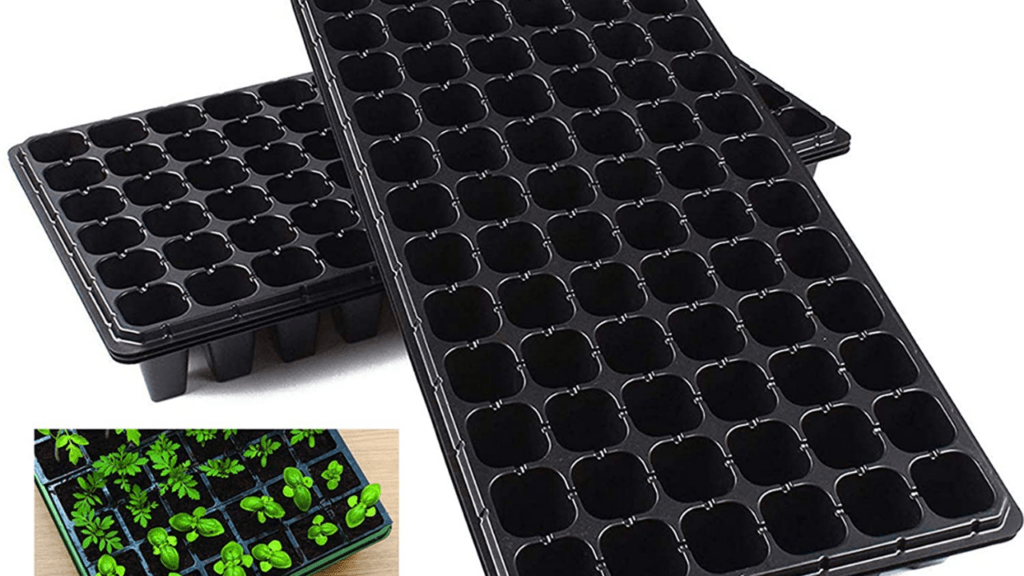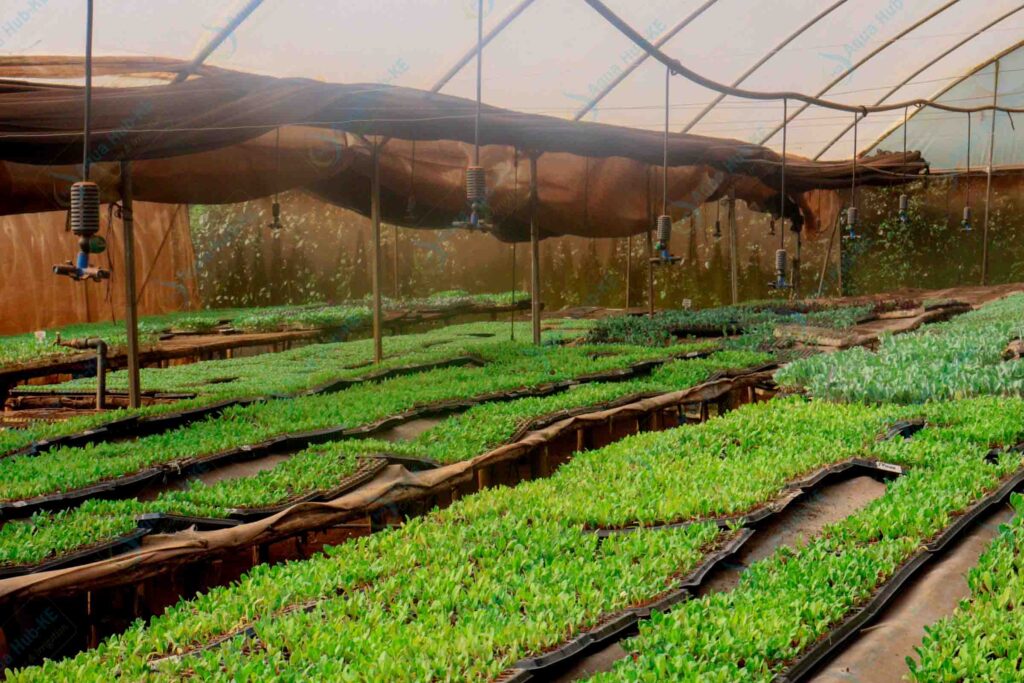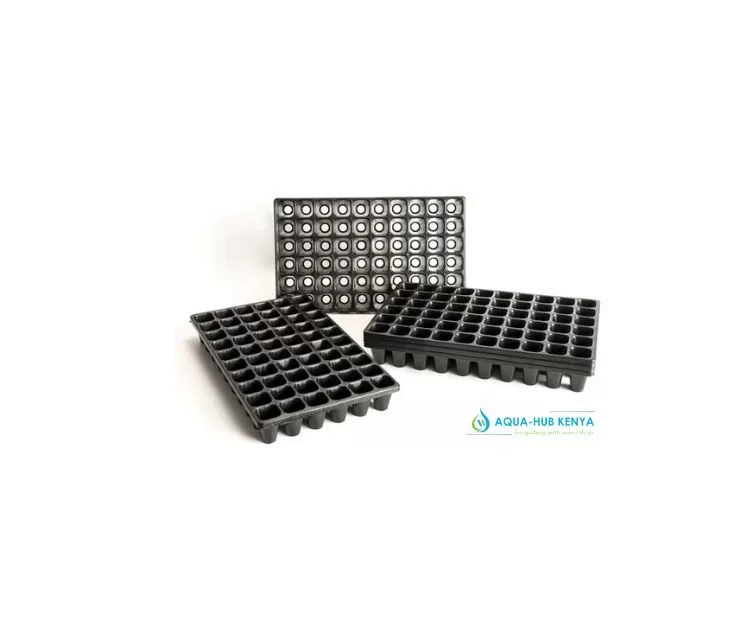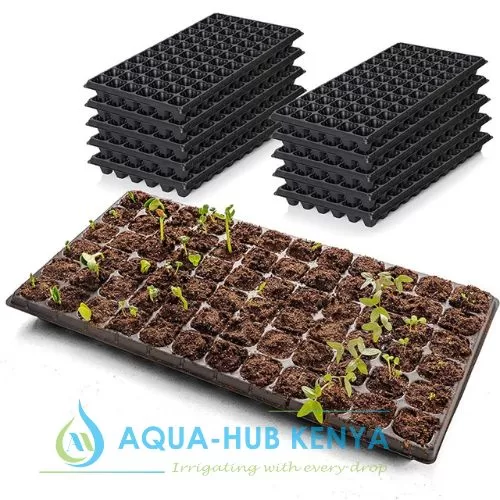Blog
Plastic Seedling Trays in Kenya 50-288 Cells
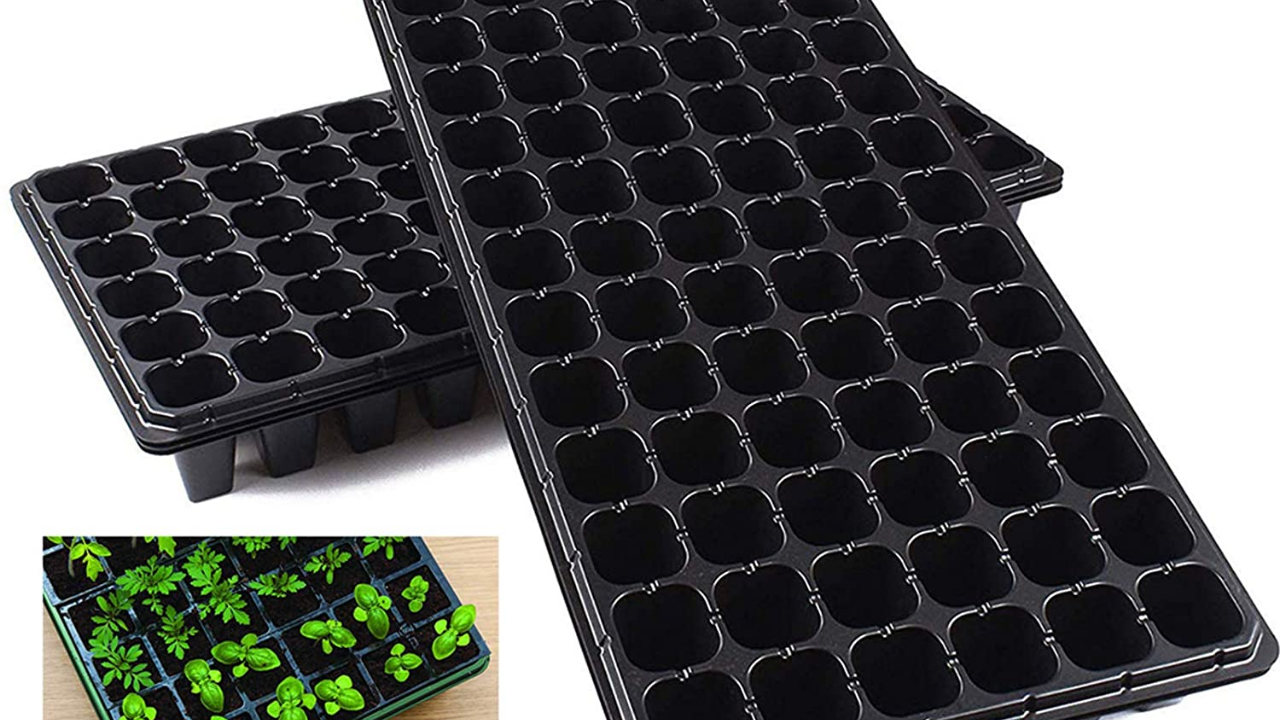
Majority of growers in Kenya start their seedlings in seedling beds especially those in rural areas. However, seedling beds are not effective because it exposes seedlings to erosion, weeds, diseases and competition for nutrients and water. Modern crop propagation embraces the use of Plastic seedling trays to ensure seedling maturity and health.
Starting your seeds in trays instead of direct sowing can drastically improve your yields, reduce costs, and ensure healthier plants.
In this comprehensive guide, we’ll explore everything a farmer needs to know about seedling trays from their types and uses to choosing the best ones for your farm.
Plastic Seedling Trays for Vegetable by Aqua Hub
We have quality plastic seedling trays for vegetable seedling propagation with varying cells from 50 – 288. We sell at KES 140 each.
Our seed trays are designed from UV treated plastic material to enhance long shelf life.
Call 0790719020
What Are Seedling Trays?
Seedling trays, also known as plug trays or nursery trays, are containers with multiple small, equally sized cells designed for growing seedlings before transplanting them into the field.
Each cell is filled with a growing medium and a single seed, allowing for uniform and efficient propagation.
Why are Plastic Seedling Trays Essential?
Plastic Seedling trays offer several advantages over traditional soil beds:
- Higher Germination Rates: Controlled conditions mean seeds germinate more uniformly.
- Disease Management: Individual cells prevent the spread of disease among seedlings.
- Environmental Control: Easy to manage moisture, light, and temperature.
- Root Protection: Minimal root disturbance during transplanting reduces transplant shock.
- Cost-Efficiency: Less seed wastage and better seedling survival mean more profits.
For farmers aiming for precision, consistency, and efficiency, seedling trays are becoming essential.
Types of Seedling Trays
There are several types of seedling trays, categorized by cell number, cell size, and material:
Based on Cell Count
- 50-cell trays – Larger cells, ideal for crops with larger root systems like tomatoes or capsicum.
- 72-cell trays – Great balance between size and number, commonly used for a variety of vegetables.
- 128-cell trays – Smaller cells for crops like onions and lettuce.
- 200-288 cell trays – Suitable for very small seeds and crops that require dense planting, like cabbage or kohlrabi.
Trays Based on Material
- Plastic trays – Most common, durable, and reusable.
- Biodegradable trays – Made of coco coir, paper pulp, or peat; can be planted directly into the soil.
- Styrofoam trays – Lightweight, good insulation properties, but not environmentally friendly.
Based on Design
- Flat trays (no cells) – Used more for microgreens or crops that need to be transplanted early.
- Perforated trays – Allow better drainage and airflow to roots.
- Stackable trays – Designed for vertical farming or limited space.
Benefits of Using Seedling Trays
Uniform Growth
Each seedling gets equal access to nutrients, water, and space—leading to uniform size and growth rate.
Space Efficiency
Trays allow hundreds of seedlings to be grown in a compact area like a greenhouse or nursery shed.
Improved Root Structure
The confined space encourages downward root growth, making plants stronger and more resilient after transplanting.
Ease of Handling and Transportation
Seedlings in trays are easier to move, inspect, and transplant, minimizing physical damage to seedlings.
Water and Nutrient Efficiency
Trays use less water and fertilizer compared to traditional nursery beds.
Reduces Seed Wastage
With controlled planting, every seed has a high chance of becoming a healthy seedling.
How to Use Plastic Seedling Trays for Propagation
Using seedling trays is simple but requires attention to detail. Here’s a step-by-step guide:
- Prepare the Growing Medium
Use a well-draining, sterile propagation medium. Common choices include:
- Coco peat
- Vermiculite
- Perlite
- Peat moss
- Compost mixes
Avoid garden soil as it may contain pathogens and poor drainage.
- Fill the Trays
Fill each cavity loosely with the medium. Avoid compacting it, as roots need air space.
- Sow the Seeds
Place one seed per cavity. For tiny seeds, use a dibbler or make shallow indentations.
- Water Lightly
Use a fine mist sprayer to water the tray without displacing the seeds.
- Cover and Place
Cover trays with a plastic dome or polythene sheet for humidity. Place them in a warm area, away from direct sun.
- Monitor and Manage
- Water daily or as needed.
- Ensure good ventilation.
- Gradually expose seedlings to sunlight after germination (hardening off).
- Transplant
Transplant when seedlings have 2–3 true leaves and a strong root system. Gently push from the bottom of each cell to remove the seedling.
Best Environments to Propagate Seedlings in Trays
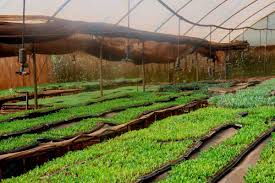
Greenhouse environment – a greenhouse structure provides protection to seedlings from harsh climate and thus enhances maximum growth.
Shade Houses – They are also ideal for tree, vegetable and fruit seedlings. Offers protected environment with control over temperature and humidity.
How to Water Seedlings in Trays
Seedlings propagated in trays are best irrigated using misters or foggers to prevent overwatering or damage of the delicate seedlings. Misting kits should be installed in the greenhouse structure or inhouse environment where the trays are kept.
Best Growing Mediums for Seedling Trays
The right propagation medium is critical. Look for these properties:
- Lightweight and porous
- Retains moisture without waterlogging
- Pathogen-free
- Nutrient-balanced
Recommended Media Mixes
- Coco peat + vermiculite (70:30) – Light and holds water well.
- Peat moss + perlite (60:40) – Excellent for aeration.
- Compost + soil + coco peat (1:1:1) – Balanced and organic.
Avoid dense clay soils or heavy compost alone—they suffocate roots.
Vegetables Best Suited for Tray Propagation
Many common vegetables benefit from being started in seedling trays:
Solanaceous Crops
- Tomatoes
- Eggplants (Brinjal)
- Peppers (Chili & Capsicum)
Leafy Greens
- Lettuce
- Kale
- Spinach
- Swiss chard
Bulb and Root Crops
- Onions
- Leeks
- Celery
- Garlic
Brassicas
- Cabbage
- Cauliflower
- Broccoli
Others
- Watermelons
- Cucumbers
- Pumpkins
- Strawberry
Direct-seeded crops like carrots, beets, or maize generally don’t do well in trays due to transplant sensitivity.
How to Choose the Best Plastic Seedling Trays
With so many options, how do you pick the right tray?
- Based on Crop Type
- Large-seeded crops – larger cells (50–72 cells)
- Small-seeded crops – smaller cells (128–288 cells)
- Material Durability
If reusing trays:
- Choose UV-resistant plastic trays.
- Avoid thin, brittle trays that break after one season.
- Drainage and Aeration
Ensure trays have bottom holes for excess water drainage.
- Cost and Reusability
- Reusable trays cost more but save money over time.
- Biodegradable trays are eco-friendly but costlier per use.
- Local Climate
In hot climates, use trays with more depth to reduce drying. In cooler climates, shallower trays warm faster.
Cost of Plastic Seedling Trays in Kenya
Plastic seedling trays are KES 140 each.
Styrofoam trays cost between KES 130 to KES 250.
Tips for Maximizing Success with Seedling Trays
- Sterilize trays before reuse using a mild bleach or hydrogen peroxide solution.
- Label trays to avoid crop confusion.
- Use bottom watering to avoid fungal diseases on leaves.
- Shade young seedlings to prevent sun scorch.
- Harden seedlings by gradually exposing them to sunlight before transplant.
Get Quality Seedling Propagation Solutions from Aqua Hub
We supply and install complete structures inclusive of seedling trays, greenhouse structure and shade nets for propagation of seedlings and other crops. Our Company also offers affordable installation as per your project requirements and needs.
Call 0790719020

